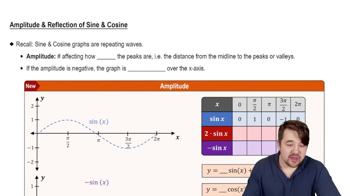For each function, give the amplitude, period, vertical translation, and phase shift, as applicable.
y = (1/2)csc (2x - π/4)
 Verified step by step guidance
Verified step by step guidance Verified video answer for a similar problem:
Verified video answer for a similar problem:



 5:43m
5:43mMaster Introduction to Tangent Graph with a bite sized video explanation from Patrick
Start learning